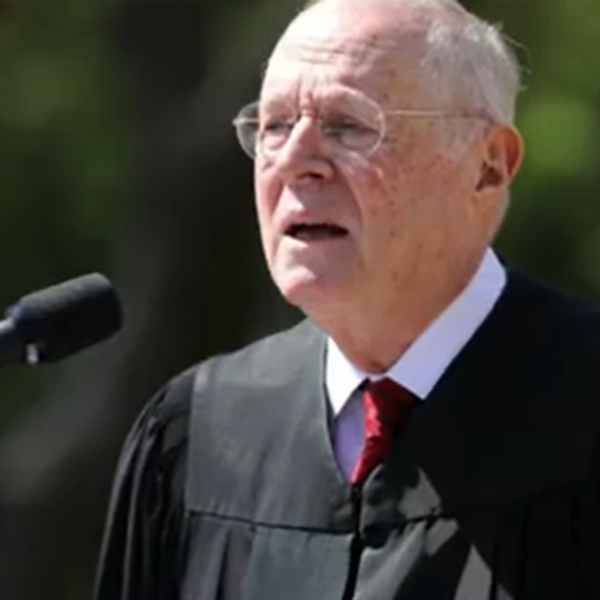
The five short documentaries nominated for the Academy Award — ranging from roughly 20 to 40 minutes in length — represent an international cross-section of filmmakers pointing their cameras on the otherwise ignored or unexamined. In a short-form documentary, you cannot diagnose a social ill, attempt to topple a dictator, or crack open the kind of sociopolitical can of worms that a feature-length doc, like fellow nominee Citizenfour, can examine. What the format is well suited to is capturing minutiae, and building itself out of quiet observations instead of sweeping declarations. Each of the five films focuses on the domestic, mundane, workaday elements of life that don’t register on a bigger canvas.
White Earth (dir. J. Christian Jensen), a portrait of a small North Dakota town impacted by an oil boom, is the least successful at connecting with its human subjects, but the most successful at conjuring visual poetry from its material. Any environmental, social, or cultural ramifications of the oil boom lie outside the film’s scope of interest, but if White Earth is sparse on humanity, it is generous with its imagery: plumes of fire flaring into the fog, oil wells glowing auburn in the sunset, impossibly long trains of jet-black tanker cars snaking through the whiteout of prairies in winter. In any final analysis, it cannot be denied that the film is astonishingly beautiful.
Whether by coincidence or not, the unifying theme among the four remaining films is the proximity of death: Death on a daily scale, death as a domestic or occupational reality, death as a future fact, present fear, and everyday concern. Each film is attuned to the rhythms of routine, the binds of loyalty and family — specifically, the sacrifices parents make for their children — and the different ways people find grace, courage, and comfort in the face of the inevitable.
Is it gauche to assign aesthetic points and demerits to these true stories of life and death — stories that began long before the cameras rolled, and continue to unfold in the subjects’ blogs, ongoing work, or, at minimum, their enduring existence? Possibly. But whatever their faults, each of these films accomplishes what documentaries at their best can do: They shine a light and expand our world.
“I think everyone can kill. You just need experience.” So says Efrain, the subject, namesake, and haunted soul at the center of The Reaper (La Parka) (dir. Gabriel Serra Arguello), and he would know. Efrain has worked at an abattoir six days a week for 25 years; each day he shoots a bolt into the brains of 500 steer. The film is a quiet, almost meditative examination of industrial slaughter and its effect on the people who keep it going. The camera idly observes well-worn machinery of death chugging along: conveyors caked in carrion, ducts dripping with offal, the ubiquity of blood, flies buzzing everywhere. Barely more expressive than the scenery is Efrain, numb and solemn, reflecting in voiceovers on the nature of death. When he watches his children eat chicken, it’s hard not to see what Efrain sees.
A mother, Joanna (dir. Aneta Kopacz), is writing something of a manifesto for her son. Well, not for him exactly — for the older boy, the young man, she knows he will become. She is trying to anticipate and answer questions that he doesn’t know how to ask yet. Though prone to the whims and explosions in temper that come with boyhood, he is an unusually mature child: curious, insightful, and more adroit at speaking to adults than they might be comfortable with. Not Joanna. She is struggling with a terminal illness. Her conversations with her son and their attendant moments — a picnic, a drive, a walk in the woods, foraging for mushrooms and splashing in the mud — are limited, and she understands how precious they are. He seems to as well. Joanna builds itself slowly, disarmingly, from such moments.
When do “subjects” become “characters”? When does a record of events become a story? This one ends too soon.
In the last 14 years, more American veterans have died from suicide than were killed in combat in Iraq and Afghanistan. The U.S. Department of Veteran Affairs established the Veterans Crisis Line as a resource for soldiers returning to civilian life, often struggling with post traumatic stress disorder, addiction, and depression. The hotline fields 22,000 calls each month, and is the only one of its kind. Crisis Hotline: Veterans Press 1 (dir. Ellen Goosenberg Kent and Dana Perry) is a sobering, anxious study of the men and women who answer calls 24 hours a day from veterans, often at moments of severe crisis. Pills, guns, and knives are present, and sometimes the counselors need to summon emergency intervention. These dialogues (of which we hear only the responders’ sides) are intimate and harrowing, as the counselors negotiate the veterans away from imminent self-harm with seemingly unlimited calm, patience, and compassion.
Crisis Hotline, which comes off the HBO Documentary Films production line, is a sleek piece of work, perhaps to its own disservice. Cameras swoop in and out of the counselors’ offices, chasing them down halls; jittery zoom-ins punch moments of extreme tension. One sequence, in which the counselors track down the name and location of a soldier who has left a short and cryptic message, is scored and pieced together like an episode of 24. Predictably, the most powerful moments of the film eschew these kind of You-Are-There-And-This-Is-Happening-Now! stylistic fireworks, and focus on the counselors talking softly, listening intently, absorbing unimaginable pain, and putting their headphones back on to take another call.
Our Curse (Nasza Klatwa) (dir. Tomasz Śliwiński and Maciej Ślesicki) begins with Tomasz and Magda Śliwiński filming themselves sitting on a couch, exhausted nearly into silence, shortly before they are to take their newborn son, Leo, home from the hospital. Leo has been diagnosed with congenital central hypoventilation syndrome (CCHS), or “Ondine’s Curse,” a rare, incurable disorder which prevents him from breathing normally while asleep. They struggle with a dual unreality — first of being young parents, and second, that their son’s prognosis is a lifetime sentence. Tomasz openly fears that when Leo is old enough to understand his condition, he will commit suicide, rather than face a lifelong struggle of relying on machines to survive. How do you explain to your son that every night he could die? How can anyone — let alone a child — cope with that knowledge?
Our Curse unfolds in Leo’s first year of life as Tomasz and Magda adapt to their new realities: the persistent thump of a ventilator’s mechanical wheeze, the restless alertness to Leo’s rhythms of sleep, the unending tangle of equipment, doctor’s appointments, and insurance wrangling. In one long, unbroken static shot, we see Leo’s parents wrap him up to prevent his limbs from flailing so they can remove, clean, and reinsert his tracheal tube — while Leo screams in near-complete silence. For the most part, Tomasz, a student at Warsaw Film School at the time of filming and co-director of the film, forgoes the temptation of turning maudlin (except for an ill-advised last-minute montage), and opts instead for understated shots of everyday childcare complicated by the elaborate mechanical apparatuses preserving Leo’s life. These he nimbly edits together with video diaries of the parents expressing their worries, flashes of mordant humor, and finally a birthday party that feels more than usually like a triumph.
As with all of these docs, the story doesn’t end when the film stops. But if the blog is any indication, Leo is doing quite well.













